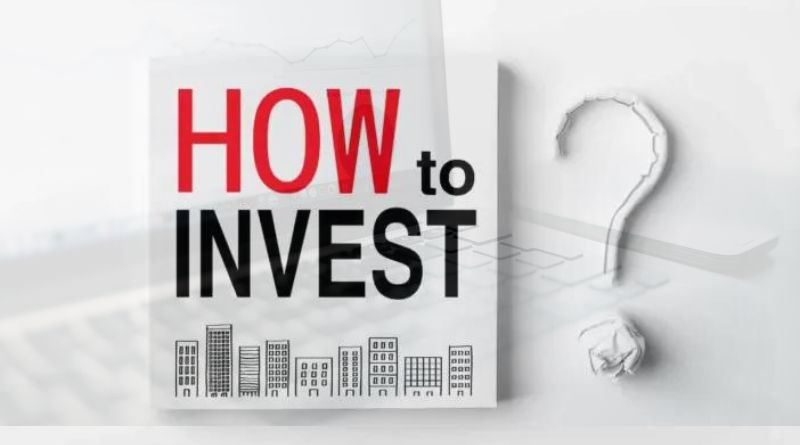Investing is a key part of getting rich and making sure you’ll have money in the future. This article will teach you the basic rules and methods of investing, whether you are a how2invest beginner or an experienced investor who wants to learn more.
We will talk about everything you need to know to become a great investor, from knowing the different types of assets to building a portfolio with a wide range of investments.
1. Intro: How to Start Investing
Investing is the process of putting money or other resources somewhere with the hope of getting money back or making money over time. It means carefully choosing and handling different types of financial tools to reach certain financial goals. There is always some risk with how2invest, but it also gives you chances to make money and grow your finances.
3. Measuring Risk Acceptance
To come up with a how2invest plan that fits your comfort level, you need to know how much risk you are willing to take. Some people are less willing to take chances and prefer stable results, while others are willing to take more risks to try to make more money. Consider your age, your financial responsibilities, and your personal tastes when figuring out how much risk you are willing to take.
4. Understanding Asset Classes
Asset classes are different ways to spend, and each has its own traits and risk levels. By learning about the main asset groups, you can increase the types of investments you can make and better diversify your wealth.
5. Stocks are a piece of a company that you own.
Stocks are shares of ownership in a company. They are also called stocks. By buying stocks, you become a part-owner of the company and have the chance to make money from its growth and success. Stocks give you the chance to make money from capital growth and income.
6. Bonds are investments with a fixed income.
Bonds are fixed-income investments in which an owner lends money to a government or company and gets interest payments and the capital back when the bond matures. Bonds are thought to be less risky than stocks, so careful buyers who want a steady income often choose them.
7. Mutual funds: make it easy to spread your money around.
Mutual funds take money from many investors and use it to buy a variety of stocks, bonds, and other assets. They are run by professional fund managers and allow buyers to build a diverse portfolio with a small amount of money.
8. Exchange-Traded Funds (ETFs)
Exchange-Traded Funds (ETFs) are like mutual funds, but they trade like individual stocks on stock markets. ETFs give buyers access to a certain index, industry, or asset class. This lets them diversify their positions while still taking advantage of the flexibility and liquidity of the stock market.
9. Real Estate: Investing in Property

Investing in real estate means buying buildings with the goal of making money from rent or capital growth. Real estate is a good way to protect yourself from inflation and get long-term profits.
10. Commodities: Putting money into things
Some examples of commodities are gold, silver, oil, and farming things. Putting money into commodities can protect you from inflation and add variety to your investment strategy. But product costs can change quickly, so they need to be carefully looked at and managed.
11. Alternative Investments: Exploring Unique Opportunities
Alternative investments include a wide range of unusual ways to put your money to work, such as hedge funds, private equity, venture capital, and digital currencies. These trades offer unique chances, but they often require a higher level of knowledge and a willingness to take on more risk.
12. Making a plan for investments
To make an investing plan, you have to decide how you want to divide up your assets, how much risk you are willing to take, and how long you want to invest for. Think about your financial goals, how comfortable you are with risk, and how much you know about investing to come up with a plan that fits your needs.
13. How to Put Together a Diverse Portfolio
Diversification is one of the most important rules of trading. It means spreading your money across different types of assets, companies, and parts of the world. A plan that is well-balanced helps reduce risks and make the most of possible gains.
14. Figuring out how well an investment did
It’s important to keep an eye on and evaluate the success of your investments on a regular basis if you want to make smart choices. Review the returns of your portfolio, compare them to relevant benchmarks, and figure out how fees and other costs affect your total returns.
15. Tips for Investing in the Long-Term
• Begin early and take advantage of gains that grow over time.
• Stay up-to-date on news and market trends.
• Don’t make decisions based on how you feel. Instead, stick to your spending plan.
• Rebalance your portfolio often to keep the mix of assets you want.
• Talk to a financial expert to get customised advice.
Conclusion
Investing is one of the best ways to make money and reach your financial goals. By learning the basic ideas and strategies in this piece, you can confidently start your investment path. Don’t forget that investing takes patience, focus, and learning new things all the time. Start today and make choices based on what you know to make sure you have a better financial future.
FAQs
1. Is investing risky? There is always some risk when you invest. But you can reduce risks and improve your chances of success by spreading out your investments and doing a lot of study.
2. How much money do I need to get started investing? There is no set amount of money you need to start spending. Some choices for investing have low minimums, while others may need a bigger initial payment. Start with what you can easily afford and build up your savings over time.
3. What is the best investment for someone just starting out? Mutual funds and exchange-traded funds (ETFs) are good places to start for people who are new to investing. These give you access to a number of different investments and can help spread risks.
4. Should I put my money into stocks or bonds? Which you choose relies on your financial goals, how much risk you are willing to take, and how long you want to invest. Stocks offer the chance for growth, but they also come with bigger risks. Bonds, on the other hand, offer security and a steady income.
5. How often should I take a look at my investments? Reviewing your how2invest account at least once a year or whenever there are big changes in your finances or the market is a good idea. Making sure your investments are in line with your goals is easier if you check on them often.


